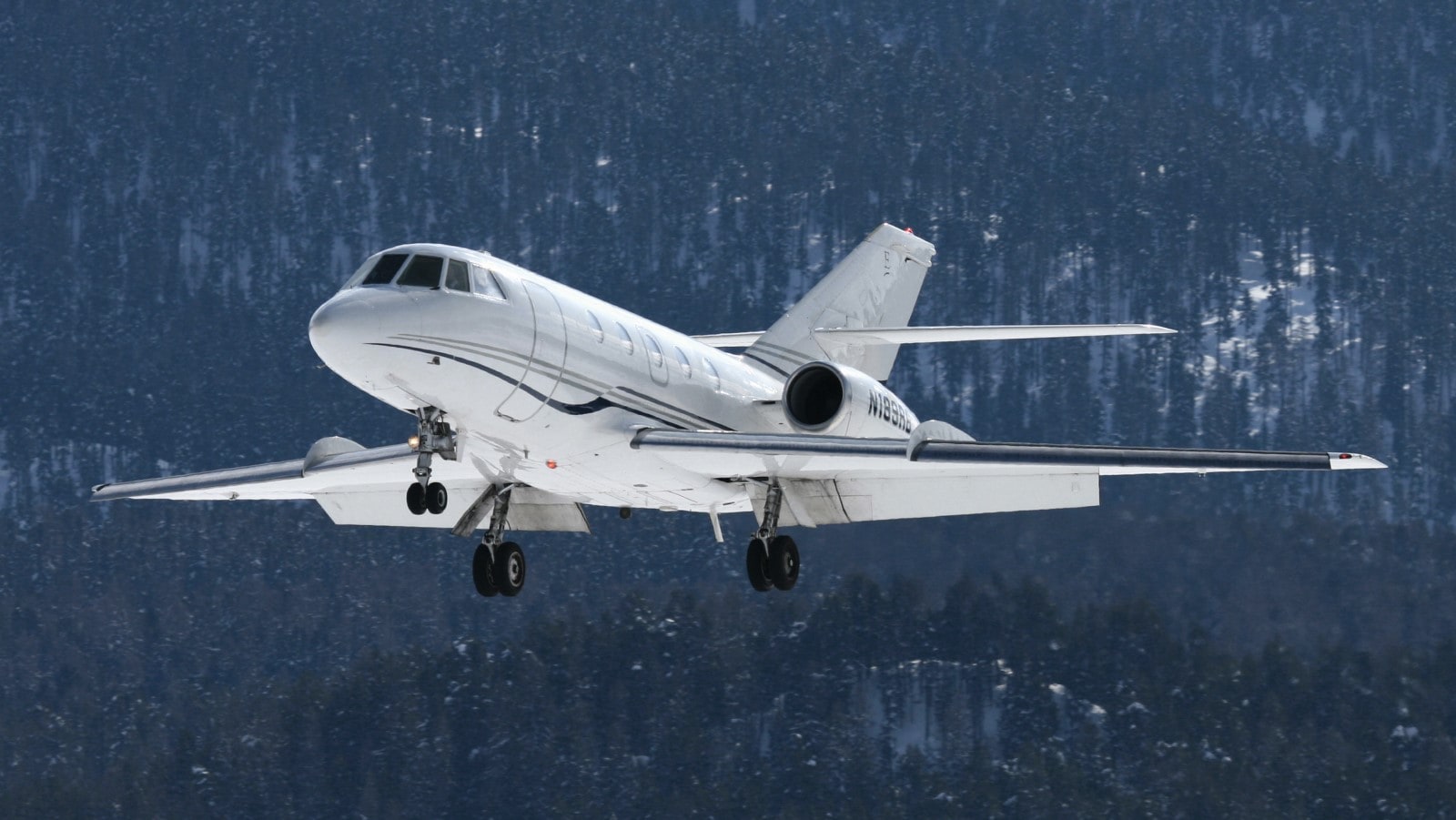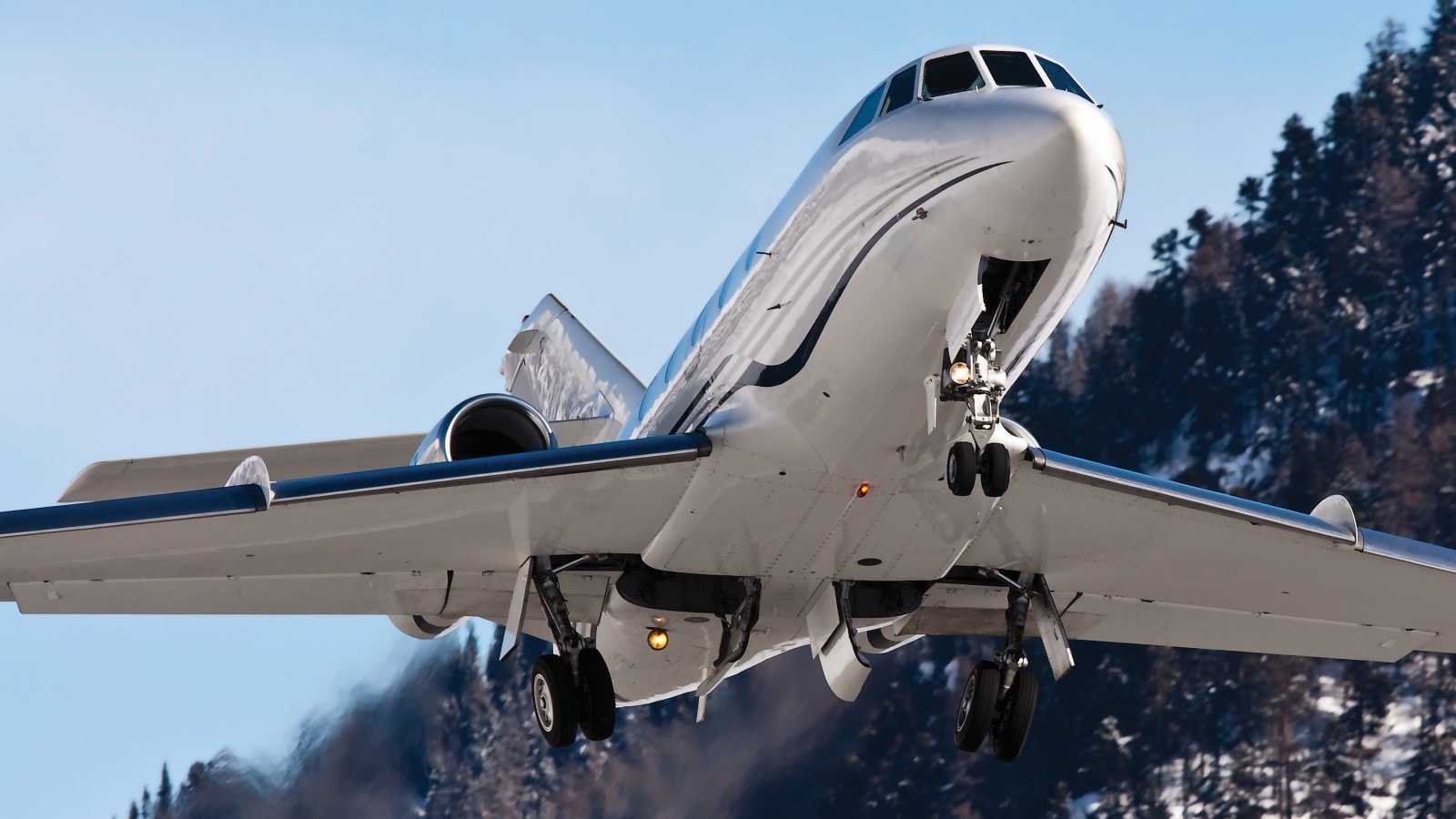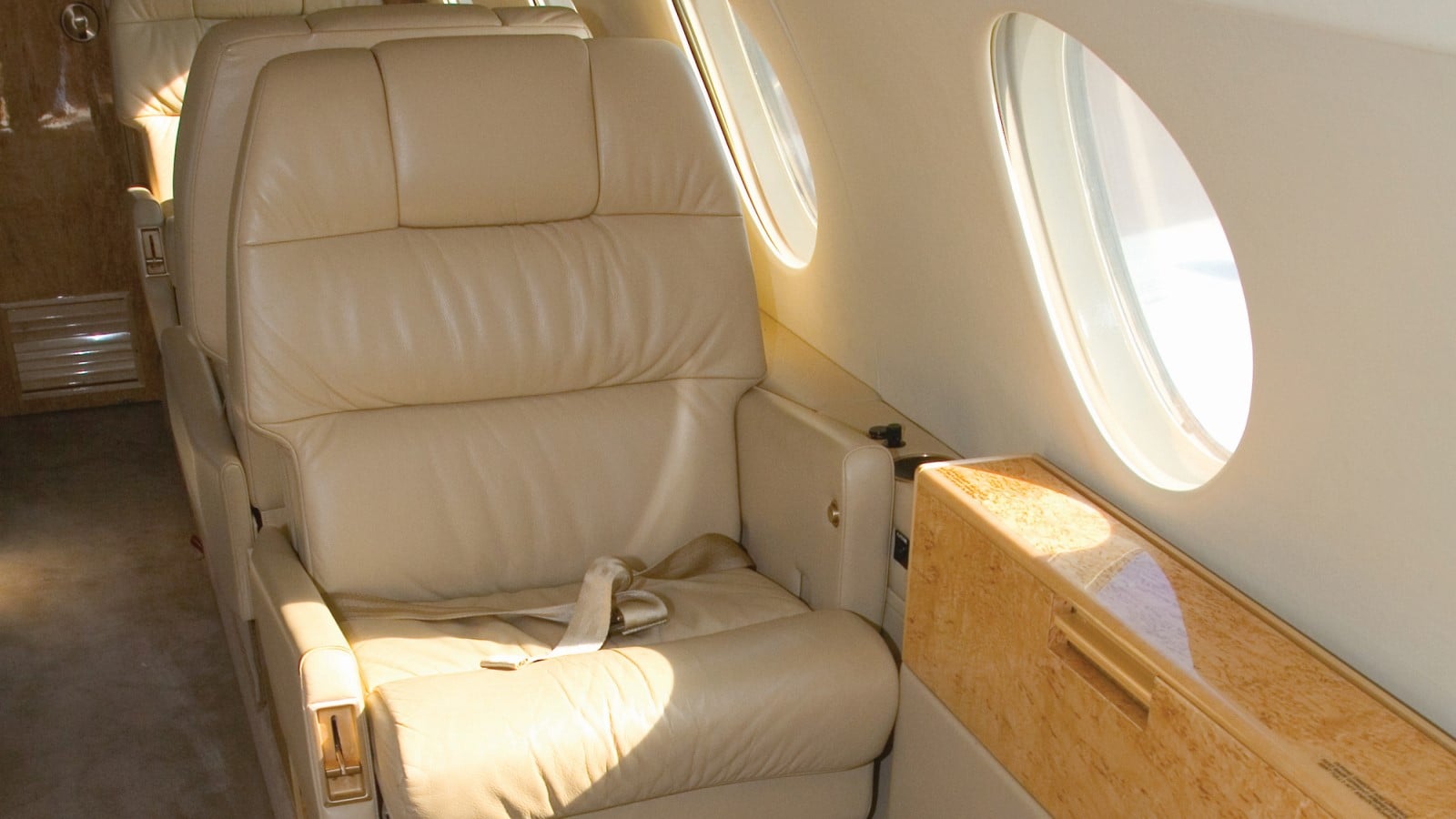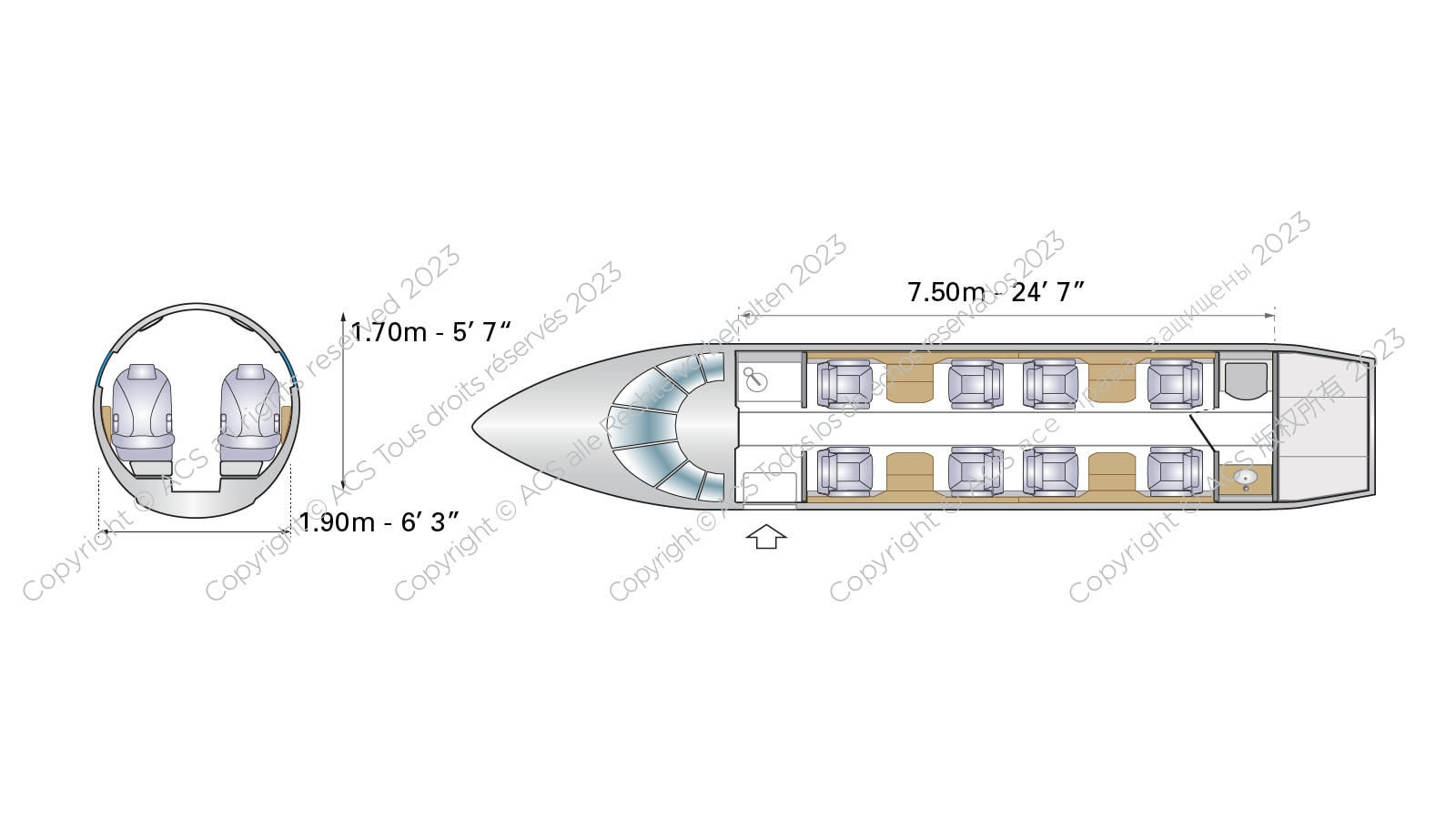DASSAULT FALCON 20 200
- Passengers 9
The Falcon 20 was the first Falcon business jet ever built, making its inaugural flight in 1963. The Falcon 200 was a later addition to the family, featuring new engines and better range.
About this aircraft
- Originally named the Mystère 20 or Fan Jet, the Falcon 20 was first delivered in 1965 with one of the largest cabins of any midsize business jet.
- The Falcon 200 launched in 1982 with improved avionics, range, fuel economy and cruise speed.
- Most Falcon 20s and 200s are configured for nine passengers, with a further seat in the enclosed lavatory if required.
- The Falcon 20 has a range of 3,300 km, whereas the more powerful Falcon 200 can fly almost coast-to-coast across the United States (approximately 4,204 km).
- The hold has space for about eight pieces of luggage.
- Dassault built several variants of the Falcon 20 including the 20C, 20D, 20E and 20F.
- Production of the Falcon 20 ceased in 1988, with the last delivery made in 1991.
Regardless of age and variation, the Falcon 20 and Falcon 200 are popular for their comfortable seats, executive layouts and elegant interiors. Generous internal storage means passengers can travel with bulky luggage like golf clubs and ski equipment.
Interior design
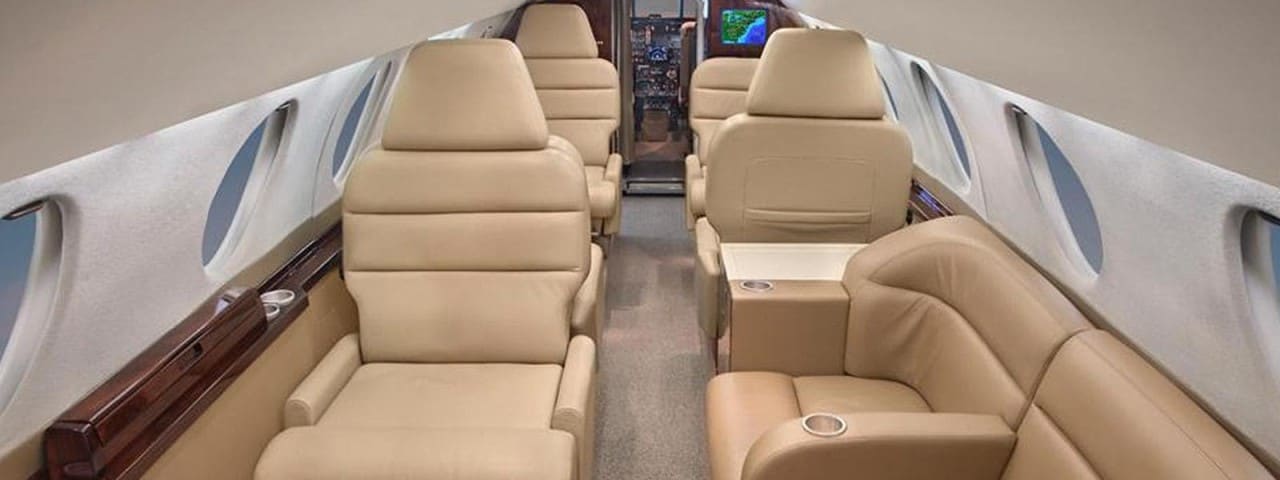
When launched, the Falcon 20 and 200 had one of the largest cabins in the midsize business jet category; typically seating eight or nine passengers in a double-club, club, divan, or individual seat layout with a spacious galley at the front and an enclosed lavatory in the rear.
Below are two examples of typical configurations found onboard the Falcon 20 and 200.


Interesting facts to learn before you fly
- Most Falcon 20s have undergone upgrades and refurbishments over the years, so configurations can vary between models.
- The popular Falcon 20F variant was produced from 1970 to 1988 with full leading-edge droops and greater fuel capacity.
Technological features
The original Falcon 20 was powered by two General Electric CF700 turbofans. The analogue/mechanical panel was almost always upgraded at the same time the aircraft was re-engined. A typical avionics suite includes the Collins ProLine 4, dual VHF 20, four-tube EFIS, APS 30 autopilot, Dual VIR 30, dual ADF 60 and dual DME 40. Other included systems are Universal UNS-1M or Global GNS-X FMS and Sperry Primus 400 colour weather radar.
The Falcon 200 has two Garrett ATF 3-6A-4C engines delivering 5,200 pounds of thrust each. It can reach a certified flight ceiling of 42,000 feet and fly at a high-speed cruise of 852 km/h. The aircraft’s avionics vary with age, but most have been upgraded to dual Collins VHF 20 communications, VIR 30 navigation systems, dual DME, dual transponders, Collins AP 105 autopilot and Sperry Primus 400 colour weather radar.
History
Marcel Dassault gave the go-ahead to produce an eight- to 10-seat executive jet or military liaison aircraft in December 1961. The Dassault-Breguet Mystère 20 prototype, registered F-WLKB, first flew in May 1963 at Bordeaux-Merignac.
After various upgrades, including twin General Electric CF700 engines, Pan American signed up to distribute the Mystère 20 in the western hemisphere. The first production aircraft flew in January 1965 and deliveries began the following year. The American-delivered aircraft was renamed the Fan Jet Falcon and quickly became known as the Falcon 20. It built a reputation for outstanding comfort, with seven planes a month being built at the programme’s peak.
As well as several variations including the 20C, 20D, 20E and 20F, Dassault developed the Falcon 200 with advanced jet engines and increased range, capacity and comfort.
The Dassault Falcon 20 remained in production for over 20 years until 1988. Its design is also the foundation for the smaller Falcon 10 and larger Falcon 50.
Manufacturer
Dassault Aviation’s history dates back to the dawn of aviation. Marcel Bloch (later known as Marcel Dassault) founded the company following a childhood fascination with aesthetics and innovation and it went on to become one of the world’s leading aircraft manufacturers.
Following the oil shock of 1973-74 and the Iranian crisis in 1979, the global economy felt the impact of rising raw material prices. Dassault bolstered its fundamentals by developing exports of civil and military aircraft against a backdrop of increasingly fierce international competition. Today, the brand holds a special place in the industry as the only global aerospace company still owned by its founding family.
Cost
A Falcon 20 typically costs from $400,000 to $500,000 (USD), while you can purchase a well-equipped 1987 Falcon 200 for around $1.6 million.
Charter rates
Charter rates for the Dassault Falcon 20 and Falcon 200 vary depending on the length of the journey you have planned, as well as the airports you decide to fly in and out of.
Wet lease rates
ACMI (Aircraft, Crew, Maintenance, Insurance) wet lease rates for the Dassault Falcon 20 and Falcon 200 can vary depending on the age of the aircraft, length of the lease term, the number of block hours being guaranteed and the average cycle ratio.
Contact our offices to book a private charter flight on the Dassault Falcon 20 or 200. For information on other private jets to charter, browse our list of available aircraft.
